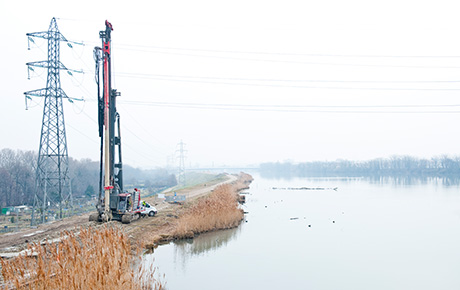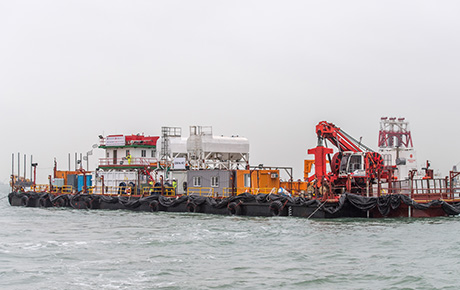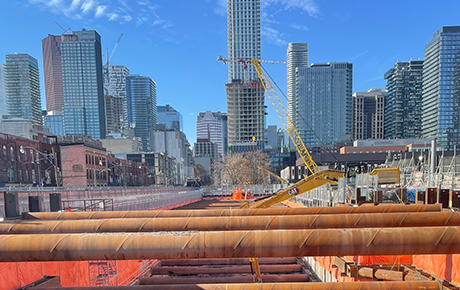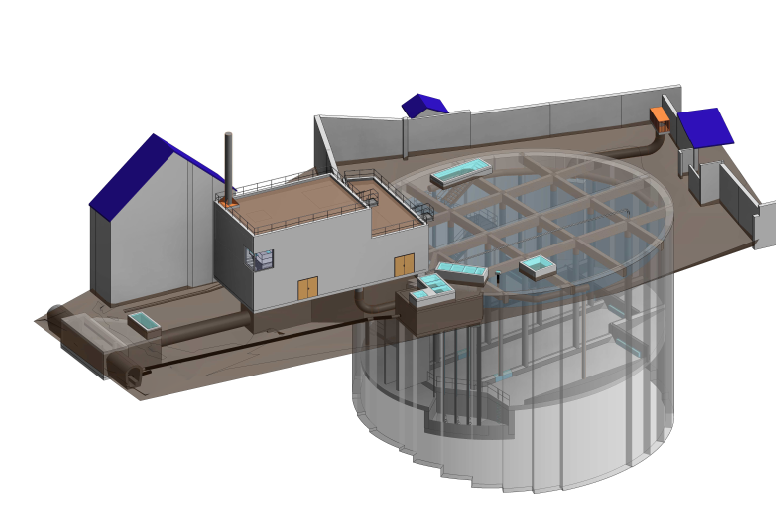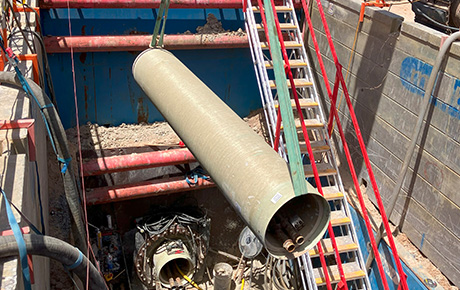Project Description
Construction technique designed to consolidate and temporarily seal soil (or fractured rock)
Soletanche Bachy mostly uses the soil-freezing principle to construct branches or galleries beneath the water table, to contain pollution, create vertical shafts through aquifers or seal openings in structures.
What is the principle of soil-freezing?
The principle of soil freezing involves transforming pore water in the soil into ice, thereby ensuring a sealed and resistant bond between the grains of soil.
Soil-freezing results from the transfer of heat from the ground to a low-temperature fluid (heat-transfer fluid or refrigerant) circulated in boreholes (called freezing tubes or freezing probes) placed in the ground: the water in contact with the freezing tube turns into ice, forming a sleeve of frozen ground around it which, by thickening over time, provides continuity with adjacent freezing tubes.
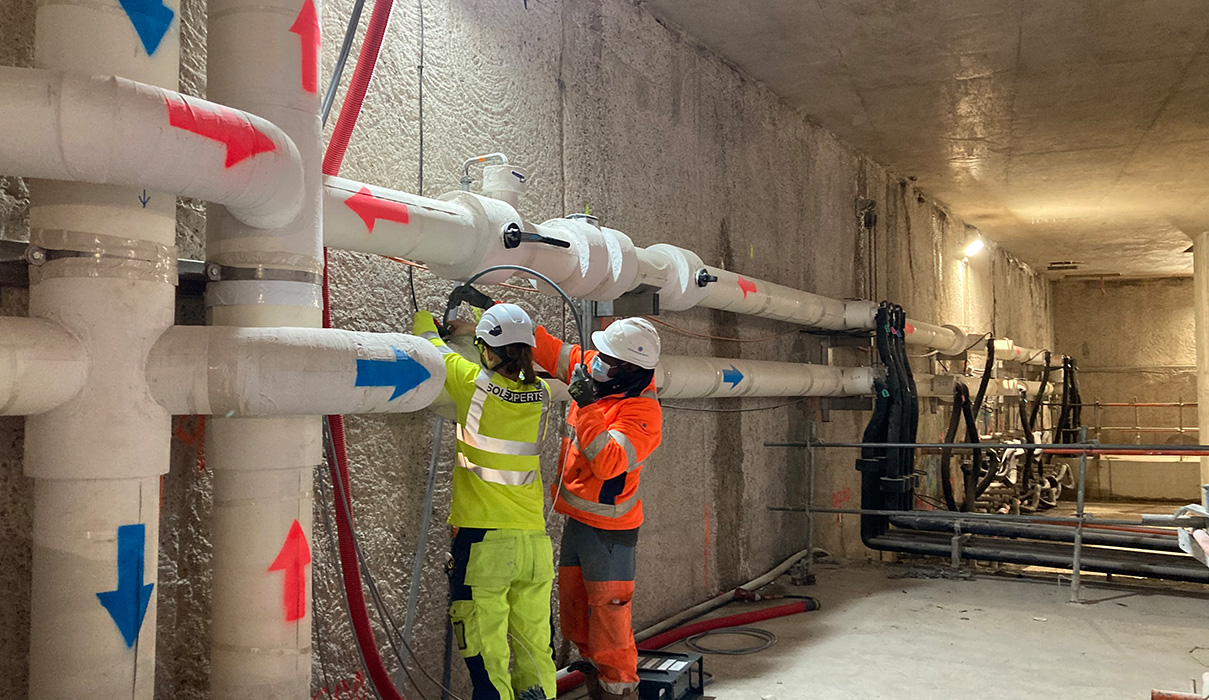
What are the advantages of this technique?
The following factors distinguish freezing from other more conventional retaining or soil treatment techniques:
The temporary nature of the treatment: therefore generally no permanent modification of the subsoil or natural hydrology
A complete seal is obtained, eliminating problems of water pumping and treatment and possible external drawdown
No chemicals are injected into the ground, preserving the environment
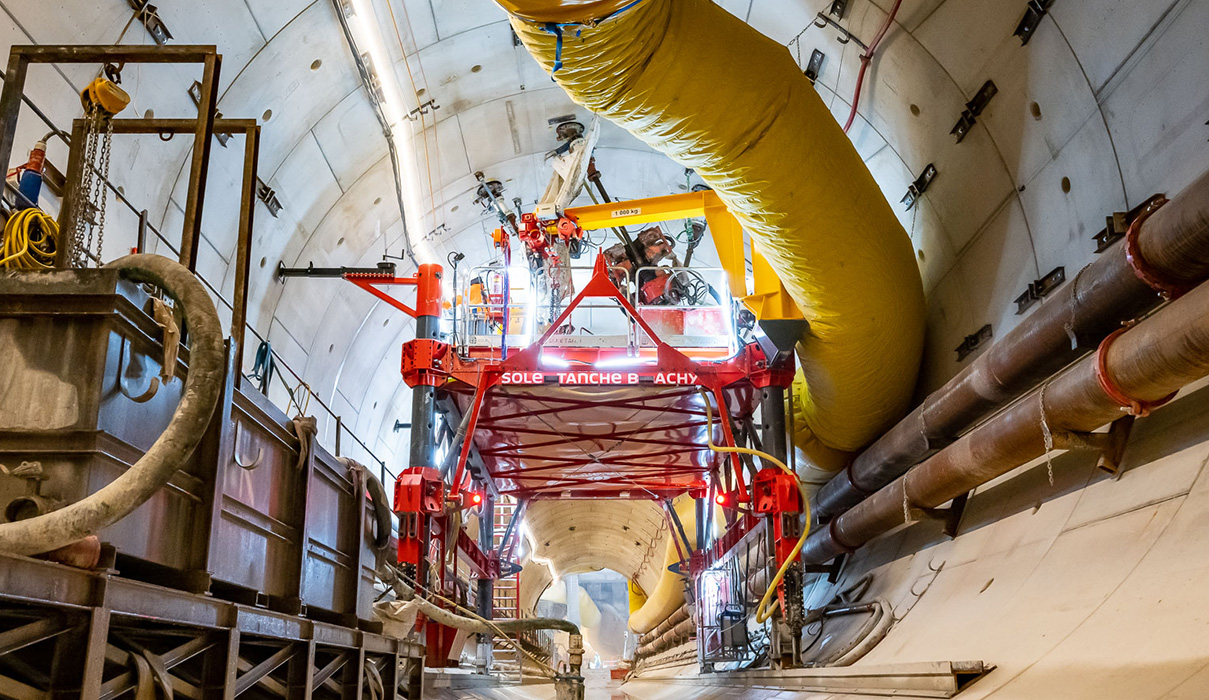

Application scope
Soil-freezing can be used for any type of aquifers. In the event of significant groundwater flow (natural or otherwise), pre-injection or denser freezing tubes may be required.
The soil-freezing technique is most often used to excavate tunnels, shafts (mining, etc.), galleries and branches when conventional methods (pumping, injection, jet grouting, Deep Soil Mixing, etc.) cannot be used due to the type of ground, depth, surface accessibility, presence of utility networks, etc.
Other rarer applications, such as the containment of polluted areas, may also be considered (Fukushima).
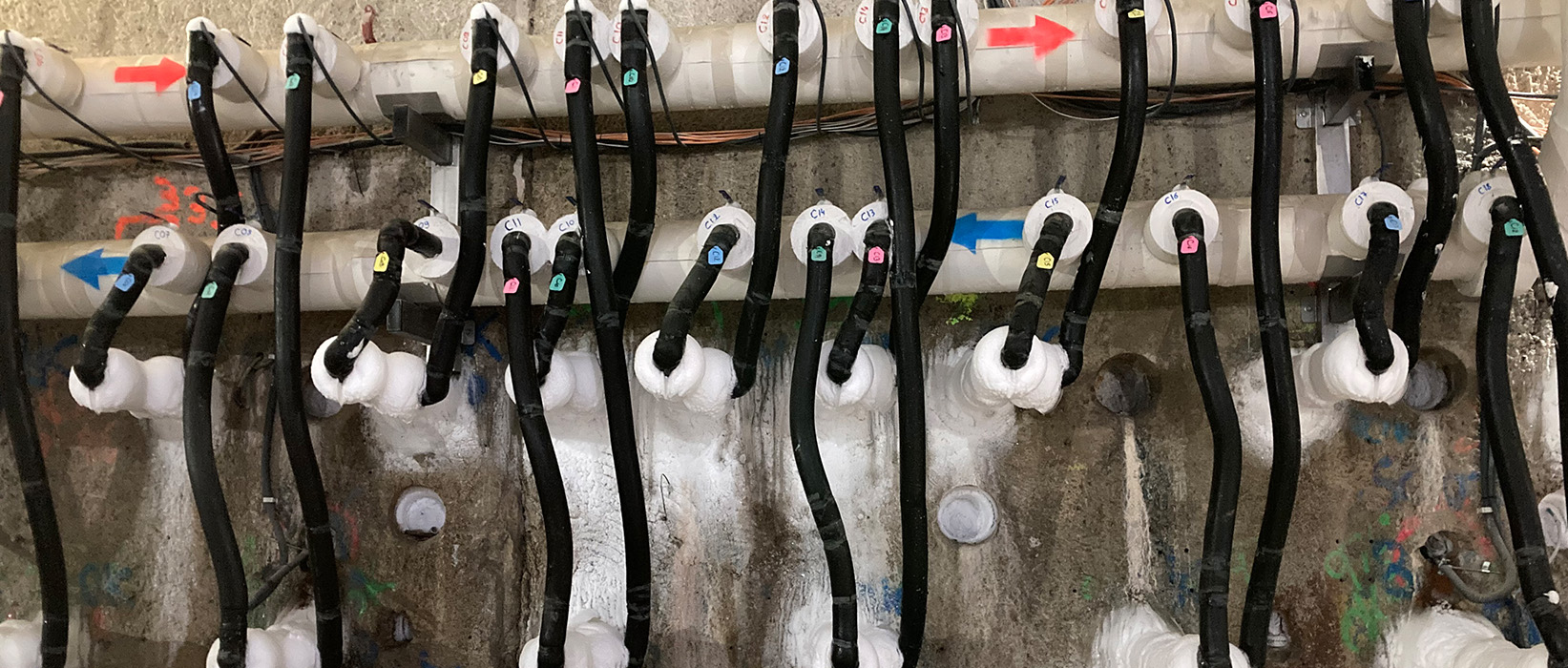
Soil-freezing methods
Two methods are used for freezing soil: the open circuit method (using nitrogen) and the closed circuit method (using brine). Both methods can be used one after the other (open then closed).
The traditional method, dating back to 1862, of freezing in a closed circuit with brine, proved useful in mines and then civil engineering. The advent of liquid nitrogen, transportable at temperatures of between -196°C and -60°C, made it possible to freeze the ground very quickly using the open circuit principle.
Method 1 : Open circuit method (direct expansion)
The heat-transfer fluid or refrigerant is liquid nitrogen. Liquid nitrogen is delivered to the worksite in special trucks and stored in specific tanks.
Nitrogen is introduced into the circuit through a valve (mostly automatic-opening based on outlet temperature) in liquid form at the cryogenic temperature of -196°C. As it flows through the freezing tubes, the nitrogen boils, changing from liquid phase to gaseous phase. For nitrogen, 1 liquid litre produces 691 litres of gas (at 15°C and at atmospheric pressure). In our soil-freezing process, the nitrogen is therefore heated and then released into the atmosphere in gaseous form, generally at a temperature between -60°C and -90°C, via a “chimney”. Around 65% of the cold is provided by the phase change at -196°C. The rest comes from heating of the nitrogen in gaseous form.
Liquid nitrogen freezing is mostly used in emergency conditions (requiring rapid cooling) or when the limits of brine freezing are reached. However, it is expensive and needs to be carried out with great care by experts, as there is a high risk of asphyxiation in the event of a leak. For this reason, during the nitrogen injection phases in the circuit, it is preferable to avoid any activity in the vicinity of the worksite.
Method 2 : Closed circuit or double exchange method
The heat-transfer fluid is a brine (mixture of water and salts), usually of calcium chloride (CaCl2), whose temperature is lowered to between -25°C and -40°C. At these temperatures, the brine remains liquid provided that its salt concentration is rigorously adjusted (eutectic point).
Using this closed circuit method, the brine must therefore be cooled before being sent to the freezing tubes. The brine first circulates in a calorie-transfer tank in the cooling unit. This tank is fitted with a filter to remove impurities. In circulation, the brine heats up by just a few degrees on contact with the ground (and in the pipes).
This is the first closed loop in the circuit.
The very low temperature cooling unit has cooled the transfer tank. This unit uses the Rankine principle (like a refrigerator) by compressing then expanding a refrigerant (R507 in the diagram below), which can sometimes be replaced by CO2, although ammonia tends to disappear. This is the second closed loop in the circuit.
The calories of the cooling unit also need to be dispersed and a fluid-air exchanger is mostly used (as in air-conditioning) although a fluid-water exchanger can also be used for space or noise reasons.
Brine freezing is generally preferred to nitrogen freezing for obvious reasons of cost and safety, as this method is both cheaper and less dangerous.
Combined method
This method combines both methods: open circuit method (nitrogen) and closed circuit method (brine).
Cooling is carried out in an open circuit using liquid nitrogen for reasons of speed. Maintenance is carried out in using a closed circuit with brine for cost reasons.
Implications:
- The materials are suitable for the cryogenic temperatures of liquid nitrogen
- The diameters of the freezing tubes are larger because they are designed for brine (although the diameter of the inner tube can be changed when moving from liquid nitrogen to brine).
Financially, this method is in between the two previous ones. It is of interest in certain circumstances:
- Urgent need to carry out freezing (benefits of liquid nitrogen) that lasts over time (benefits of brine)
- Higher groundwater flow rate than that permitted for brine-freezing. Use of freezing with liquid nitrogen makes it possible to expand the mass of ice and cut off the water flow. Brine then takes over to maintain the ice. This solution is valid for water flow around the periphery of the mass of ice provided there is no gradual melting of the ice due to excessive transfer of calories.
- Since the cooling phase uses nitrogen, it results in less increase in volume. Specific studies must be conducted to confirm this point.
Why working with Soletanche Bachy?
Did you know?
